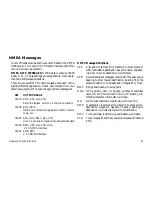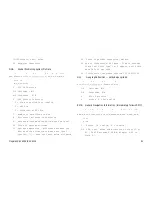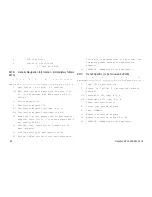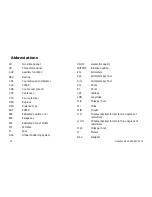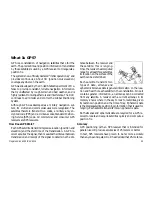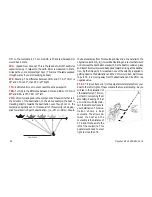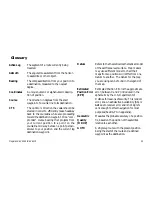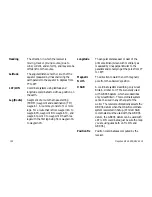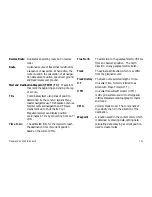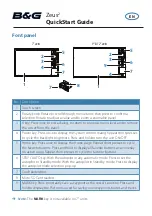
Magellan NAV 6500/NAV 6510
95
What Is GPS?
tance between the receiver and
the satellite: this is ranging.
Once the receiver has computed
range for at least three satellites,
its location on the surface of the
earth can be determined.
Each satellite transmits two
types of data, almanac and
ephemeris. Almanac data is general information on the loca-
tion and health of each satellite in the constellation. Since it
contains general information, an almanac can be collected
from any satellite. A receiver with a current almanac in its
memory knows where in the sky to look for satellites, given
its last known position and the time of day. Ephemeris data
is the precise satellite positioning information that is used for
ranging. Each satellite transmits its own ephemeris data.
Both almanac and ephemeris data are required for a GPS re-
ceiver to locate and acquire satellites quickly and compute a
position fix.
Accuracy
GPS positioning with an SPS receiver that is intended for
general use will produce accuracies of 25 meters or better.
In fact, SPS receivers have proven to be far more accurate
than anyone anticipated. DoD has decided that 25-meter ac-
GPS is a constellation of navigation satellites that orbit the
earth. The precise time and position information transmitted
by these satellites is used by a GPS receiver to triangulate a
position fix.
The system is now officially declared “initial operational,” and
provides continuous, 24-hour 3D (position plus elevation)
coverage anywhere on the earth.
GPS was developed by the United States Department of De-
fense to provide consistent, reliable navigation information
that is unaffected by rough terrain and bad weather, and is
highly resistant to multipath errors and interference. The DoD
continues to administer and control the Global Positioning
System.
Although GPS was developed as a military navigation sys-
tem, its civilian and commercial uses were recognized. The
satellites therefore transmit two codes, a military-only en-
crypted code (PPS) and a civilian-access, Standard Position-
ing Service (SPS) code. All commercial and consumer GPS
receivers are SPS receivers.
How Does GPS Work?
Each GPS satellite transmits its precise location (position and
elevation) and the start time of the transmission. A GPS re-
ceiver acquires the signal, then measures the interval between
transmission and receipt of the signal to determine the dis-
Содержание NAV 6500
Страница 1: ...NAV 6500 NAV 6510 User Manual M A G E L L A N...
Страница 3: ...Magellan NAV 6500 NAV 6510 User Manual...
Страница 8: ...Coordinate Systems 93 What Is GPS 95 Explanation of Data Terms 97 Glossary 99 Index 102...
Страница 81: ...Magellan NAV 6500 NAV 6510 73 Flush Mount Diagram...
Страница 88: ...Magellan NAV 6500 NAV 6510 80 Water Turbulence Tideway Water turbulence Weed Kelp Windmill Windmotor Wrecks...
Страница 112: ...Magellan NAV 6500 NAV 6510 104...
Страница 113: ......
Страница 114: ...630323 960 Overland Court San Dimas CA 91773 USA 909 394 5000...



